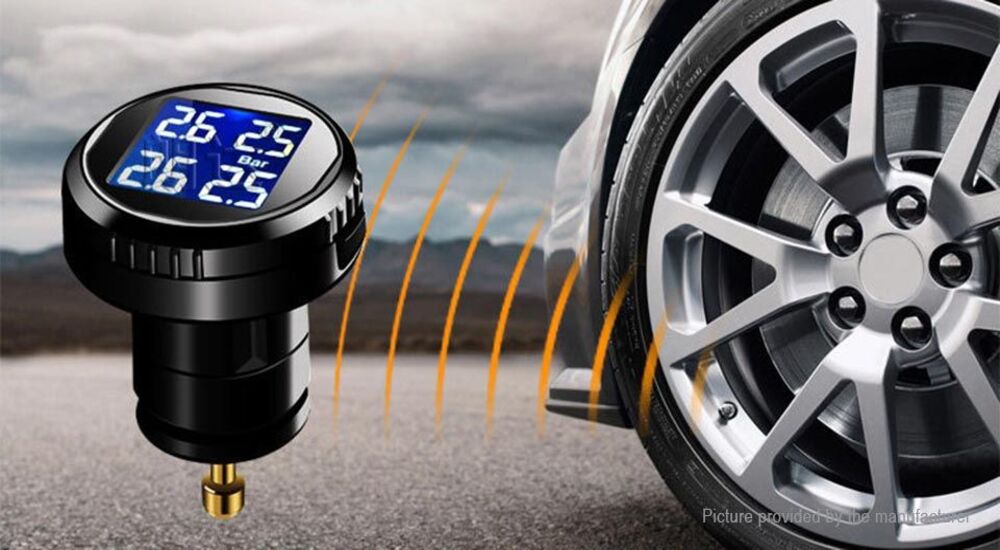Your Secret Weapon for Road Safety: How TPMS Protects You
When people talk about road safety, the conversation often jumps straight to seatbelts, airbags, and anti-lock braking systems. These are indeed lifesavers, but there is another safety feature that quietly works behind the scenes, one that many drivers overlook the Tyre Pressure Monitoring System (TPMS).
Think of TPMS as your car’s silent guardian, always watching over your tyres to make sure they are inflated just right. It’s not only about saving fuel or making your tyres last longer, it’s also about protecting you and your passengers from one of the most common causes of accidents: incorrect tyre pressure.
What is TPMS and How Does It Work?
TPMS is a built-in safety system that constantly monitors the air pressure inside your tyres. It works in two main ways:
- Direct TPMS – This uses tiny sensors placed inside each tyre to measure pressure and send real-time updates straight to your dashboard.
- Indirect TPMS – Instead of measuring the pressure directly, it uses the car’s ABS wheel speed sensors to detect changes in wheel rotation that could signal under-inflation.
No matter the type, the aim is the same — to warn you before low or high pressure becomes a danger on the road.
Why Tyre Pressure is Critical for Safety
Your tyres are your only contact point with the road, so their pressure plays a huge role in grip, stability, and braking distance.
- Under-inflated tyres can overheat and fail, especially at high speeds.
- Over-inflated tyres lose traction and are more prone to blowouts.
Driving with the wrong pressure can also:
- Increase stopping distances.
- Reduce cornering control.
- Lower fuel efficiency.
- Cause uneven, premature tyre wear.
TPMS acts as your early warning system, catching these problems before they put you at risk.
Real-World Scenario: How TPMS Can Save You
Picture this you’re driving on a blazing summer afternoon in Dubai. The road heat is intense, your tyres expand, and pressure shifts quickly. Suddenly, your TPMS warning light flashes. You pull over, check the tyres, and adjust the pressure before carrying on.
Without TPMS, you might have kept driving, unaware that your risk of a blowout had just increased. And it doesn’t matter if you’re driving a compact car, a luxury SUV, or an off-road beast fitted with 285 70 r17 tyres, TPMS is your first line of defence against tyre-related disasters.
How TPMS Saves You Money Too
Although TPMS is primarily about safety, it has a welcome side effect — it helps you save money over time. Keeping your tyres properly inflated means:
- Lower fuel costs, because rolling resistance is reduced.
- Longer tyre life, thanks to even tread wear.
- Fewer roadside emergencies caused by blowouts.
The savings you make in fuel and tyre replacements can easily outweigh the cost of maintaining your TPMS sensors.
Busting Common TPMS Myths
Let’s clear up a few misunderstandings:
- Myth 1: TPMS replaces manual checks – Not true. TPMS is an excellent tool, but you should still manually check your tyre pressure every month.
- Myth 2: TPMS only works when the car is moving – Direct TPMS can detect pressure changes even when your vehicle is parked.
- Myth 3: TPMS alerts mean you have a flat – Often, it’s just a slight drop in pressure from temperature changes, but it still needs attention.
TPMS and Other Safety Systems
In modern vehicles, TPMS doesn’t work alone. It can integrate with adaptive cruise control, traction control, and even stability systems. This means your car could automatically adjust braking or speed if the tyres lose pressure or grip, adding another layer of safety.
Taking Care of Your TPMS
To keep your TPMS in top shape:
- Replace sensor batteries every 5–10 years.
- Check sensor stems for corrosion during tyre changes.
- Reset the system after rotating or changing tyres.
- Update the TPMS software when your manufacturer recommends it.
Regular maintenance ensures the system always gives accurate readings.
Seasonal Driving and TPMS
Tyre pressure changes with temperature. For every 10°C drop, you can lose about 1 psi. That means you could start the day with perfect pressure in summer but be under-inflated on a cold winter morning. TPMS makes sure you’re aware of these shifts so you can adjust before problems arise.
The Future of TPMS
By 2030, TPMS will likely go beyond just warnings. AI-powered systems could:
- Adjust tyre pressure automatically as you drive.
- Share road condition data with other vehicles via the cloud.
- Work hand in hand with self-driving tech for complete tyre management.
In the future, your car might even take care of its own tyres without you lifting a finger.
FAQs About TPMS
What does TPMS stand for?
Tyre Pressure Monitoring System, it alerts you when tyre pressure isn’t within the safe range.
Do all cars have TPMS?
Since 2014, most new vehicles in many countries have TPMS, but older models may not.
Can I drive with the TPMS light on?
You can, but you shouldn’t. It means your tyre pressure is not optimal and safety could be compromised.
Does TPMS work with all tyres?
Yes, it works with all types — from standard city tyres to off-road sizes.
How often should I calibrate my TPMS?
After tyre changes, rotations, or whenever you suspect inaccurate readings.
Final Word
In conclusion of this blog, TPMS is far more than just a glowing light on your dashboard. It’s an essential safety partner that quietly works to keep you safe, improve handling, save fuel, and extend tyre life. Whether you’re commuting through busy city streets, cruising down the motorway, or tackling rugged terrain with tyres, this system is always on your side.
Treat it well, pay attention to its warnings, and you’ll not only drive safer but smarter too.












